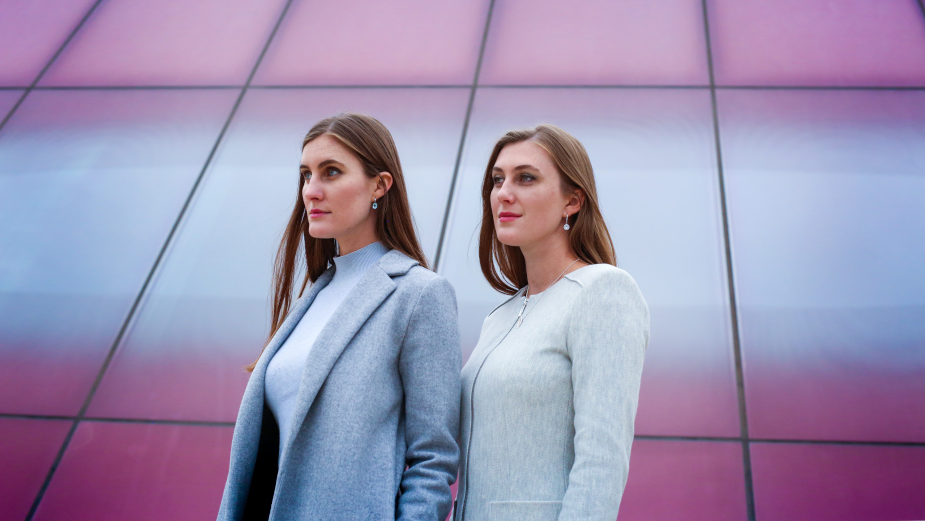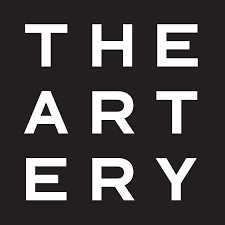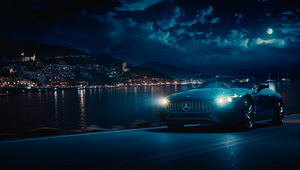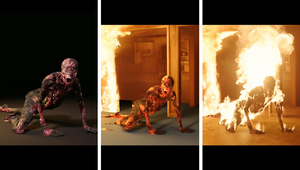
The Directors: RAY SISTERS

The RAY SISTERS, comprised of co-directors and sisters Austin and Westin Ray, grew up on an aquaculture farm on the Californian / Mexican border. When they weren't picking up tarantulas, they were inventing stories of time travel to Ancient Egypt. Collaborating together, the RAY SISTERS have shot documentaries in Iceland, North Africa, and the Mediterranean.
Their narrative films and branded content have won awards at the Directors Guild of America, Austin Film Festival, Savannah Film Festival, HBO, and Moët & Chandon. In addition to their co-directing work, Westin has produced music videos for Interscope and short films that have appeared on VICE, Vimeo Staff Picks, and Short of the Week. Austin, as a music composer, has scored films that have won Student Academy Awards and BAFTAs, premiered at Telluride Film Festival, and commercials for BMW and United Nations, as well as winning the 2019 Kinsale Shark Award for Best New Music Composer.
The RAY SISTERS were selected for SHOOT Magazine’s 2019 New Directors Showcase, sponsored by the DGA. The duo currently work as film and commercial co-directors / cinematographers.
Name: RAY SISTERS
Location: California, NYC, London
Repped by / in: The-Artery
Awards: 2019 SHOOT New Directors Showcase, 2019 Kinsale Shark Best New Music Composer, DGA Student Jury Award, Austin Film Festival Audience Award, Savannah Film Festival HBO Best Student Short
What elements of a script sets one apart from the other and what sort of scripts get you excited to shoot them?
Westin > We ask ourselves these questions: Is it a world we want to spend time in? Do the characters feel authentic and have intriguing dynamics with each other? Is the dialogue believable? Have we seen this story before? Is there a unique angle? How developed is the idea and how much is left on the runway for us to take flight? Is there an 'ah-hah' moment that prompts you to think or ties everything together conceptually? We’re suckers for clever tie-ins and ah-hah moments.
Austin > Even a simple script needs to have depth or spark curiosity. Our job as filmmakers is to turn over every mossy log and see what scurries out, or what is blooming underneath.
How do you approach creating a treatment for a spot?
Westin > A treatment is a way to take a microchip of visuals from our brains and upload them to someone else’s. It’s a powerful mode to transfer a blueprint of your idea to the client and agency. To me, being a director means you are the constant guardian of the tone and this starts with the treatment. Austin and I prefer to do our own treatments (design and copy) because it allows us to figure out how we’re actually going to pull off the project. It usually takes us four to five days but saves us time in pre-production. Also after winning the bid, we often show visuals from the treatment to encourage prospective crew members to jump on board. It’s the simplest way of communicating our style, and it assures a DP or sound designer of the production value.
Austin > Much like making music playlists, I probably enjoy creating treatments way too much. In a way, it’s like scrapbooking for adults - minus the Elmer’s glue and stickers. Prior to directing, I pulled images for a production company, so I’ve culled together a database of visuals, a lot like a sound designer and their sound effects library. I also applaud WDMV (We Direct Music Videos) for standing up for a more respectful and efficient pitching process. In other industries, you wouldn’t be automatically expected to work for free (for several days or even weeks) creating treatments for commissioned projects. We believe there’s a happy medium that serves both directors and the commissioners.
If the script is for a brand that you’re not familiar with / don’t have a big affinity with or a market you’re new to, how important is it for you to do research and understand that strategic and contextual side of the ad? If it’s important to you, how do you do it?
Westin > We come from a family of scientists and biologists, so we love research. 'Fake It Until You Make It' can only get you so far. The agency is key in conveying brand information, but a deep dive on Google and YouTube has its merits. We recently worked on a project with the Wildlife Conservation Society (WCS) and had to study differences between the African Ground Pangolin and the Southeast Asian Sunda Pangolin, so we could recognise which one was which in the stock footage. (Turns out it’s the colour of the skin on the tip of their noses.) After staring at the 100th clip of a pangolin eating larvae, you can’t help but laugh at all the random places that film research leads you.
For you, what is the most important working relationship for a director to have with another person in making an ad? And why?
Austin > This is a tough one! Amazing producers are the unsung heroes, as they are protectors and providers. They’re there every step of the way to get the film or advert 'in the can'. That said, being on the same page with the agency is SO important. We’ve been lucky to have had very open communication with agencies on our past and present jobs. All this made it easier to problem-solve and collaborate - we hope this streak continues.
Westin > Honestly, it’s all important; film is a collaborative business, and your relationship with an editor is just as important as the DP, and so forth. So be nice and treat others as you would like to be treated. Film is a small town.
What type of work are you most passionate about - is there a particular genre or subject matter or style you are most drawn to?
RAY SISTERS > We’re passionate about creating films with a beating pulse and a thinking mind. Motivated by human stories and authentic performances, we aim to shine a light on the beauty of unexpected moments. Our style is observational, natural, cinematic, and vibrant. If it’s the right fit for our voice, we are open to all formats; storytelling is storytelling.
As self-proclaimed 'story-explorers', we do gravitate towards the genre of drama...but try to find humorous moments in the middle. Isn’t that where real life is most reflected? We aim to create films that represent intelligent and driven characters of all backgrounds in surprising pairings on-screen, breathtaking locations, and music scores which Austin loves to compose.
What misconception about you or your work do you most often encounter and why is it wrong?
Westin > In terms of misconceptions about Austin and me, there are a few. Firstly, people assume that we’re guys from our weird, matching boy-names. (This has resulted in many a long email chain of 'Hey Man!' and 'Thanks Dude!'). Secondly, people think we’re twins. Close, but not quite. Since sister co-directing pairs are rare in the business compared to brother pairs, people will assume we are a married co-directing pair before sisters. At a camera rental house, I’ve been asked whether my 'husband Austin' will be joining me. And lastly, at film festivals, filmmakers often proceed to give us advice on being actresses - us being directors doesn’t occur to them. And trust me, you do not want to see us act…we are much better behind-the-camera.
Austin > In regards to misconceptions about our work, just because we are women doesn’t mean we are only interested in telling female stories. We love to champion women, but are interested in all types of human stories.
Have you ever worked with a cost consultant, and if so, how have your experiences been?
RAY SISTERS > Not yet! It’s more in the producer’s realm.
What’s the craziest problem you’ve come across in the course of a production – and how did you solve it?
Westin > Well, there was the time we shot on a nature preserve and heard the 1st AD say words you don’t want to hear on the radio: “We’ve…uhh…got a rattlesnake at basecamp.” Sometimes the solution is about delegation. Although we grew up with Diamondback rattlers in the desert, Austin and I were in the middle of a shot and couldn’t leave. Our 1st AD switched to a confidential radio channel (as to not alarm the entire set) and called the park rangers to extract the rattler from beneath the crafty tables. Apparently it just wanted to join the crew for lunch!
Austin > Once Westin was camera-operating on the back of a speeding motorbike, and her pant leg caught fire. The quick solution was to holler for the driver to stop, then stomp it out in the dirt, but the longer solution would’ve been to hire a motorcycle rig or camera car to do it smartly and safely in the first place...or perhaps wear non-flammable pants.
How do you strike the balance between being open / collaborative with the agency and brand client while also protecting the idea?
Austin > Getting on the same page and honesty is a must. Being a 'yes' person might help in the beginning, but doesn’t benefit either you or the agency in the end when the project is in post and a preventable problem arises. You have to have a strong aesthetic and set of values to anchor your decisions. But remember, the project is the agency’s baby, too, and in most cases, they gave birth to it first.
Westin > I have noticed that often the agency is on the same page as the filmmakers. However, it’s important to help them convey the idea to the client, who are experts in their field, but can be unfamiliar with film terms or the production process.
What are your thoughts on opening up the production world to a more diverse pool of talent? Are you open to mentoring and apprenticeships on set?
RAY SISTERS > 100% agree, especially for positions behind-the-camera. There’s a quote from film director Julie Dash: “Whenever I do a film, it has to take us one step further to making the world safe for everyone.” Although entertainment is often a driving force, this quote forces you to think about the impact of films and how they’re made. Awareness - whether that’s in representation on or off-screen, or looking beyond harmful stereotypes, benefits us all. Also, when the ratio of women and men is closer to equal - the vibe on set becomes a lot more nurturing, a lot more supportive, and a lot less ego. Who doesn’t want that?
How do you feel the pandemic is going to influence the way you work into the longer term? Have you picked up new habits that you feel will stick around for a long time?
Austin > It was trial by fire, but the pandemic is teaching us to be more adaptable and bigger-picture oriented. On one side of the spectrum, we’re not saving lives, but then again, art, music and media this year has kept the world sane and entertained, proving an overwhelming need for the arts.
Westin > I think the industry as a whole will be (or at least should be) more understanding of a work-life balance. With Zoom calls from home this year, we saw a more vulnerable or personable side of people: babies crying in the background; cats running across the screen; or a glimpse of your co-worker’s vinyl collection or snowboard on a wall. Professionalism is important to maintain, but seeing another side really humanises everyone in a wonderful way.
Your work is now presented in so many different formats - to what extent do you keep each in mind while you’re working (and, equally, to what degree is it possible to do so)?
Austin > We definitely keep formats and viewing platforms in mind in regards to cinematography or duration of the piece. As long as agencies and clients tell us in advance which formats will be used, then we can usually think of creative ways to accommodate this - just don’t request it in the 11th hour!
What’s your relationship with new technology and, if at all, how do you incorporate future-facing tech into your work (e.g. virtual production, interactive storytelling, AI / data-driven visuals, etc)?
RAY SISTERS > After signing with our new production company, The-Artery, we feel like kids in a candy shop because of the technology at our fingertips. Coming from the indie narrative world (where the VFX budget is often small or plain ‘ole nonexistent), we’ve been conditioned to think of stories that don’t use VFX or innovative tech. But now that we have a badass, tech-talented team behind us, we’re excited to kick into high gear.
The-Artery’s founder, Vico Sharabani, has been pushing the envelope in creative future-facing tech for years. Conversations with him start out with us saying: “….Oh, we would love to do this, but it’s probably too hard to pull off”, and Vico is like: “What are you saying… it’s no problem, we can do that in two days.” Our EP Deborah Sullivan tells us to “always assume there is some aspect of visual effects that will enhance any film or any motion image", which is probably something most directors don’t immediately consider.
Which pieces of work do you feel really show off what you do best – and why?
2020 Reel
A collection of our directed film and commercial work. Fun Fact: almost all of the footage we DP’d and operated, as well as Austin music-composing all of it.
Wildlife Conservation Society 'Protect Wildlife. Protect Us.'
Narrated by Lucy Liu, this Wildlife Conservation Society PSA draws attention to the clear connection between our current Covid-19 pandemic and the exploitation of wild animals in wildlife markets. Protecting wildlife helps protect us against the spread of zoonotic diseases. Made in alliance with the 2020 'Preventing Future Pandemics Act', a bipartisan bill introduced to the US Senate.
We Are the Daughters
Scientists. Welders. Mothers. Daughters. A vignette of stories following seven modern women as they navigate their lives, centuries away from 1693 and far from Salem.....or is it so far? Celebrating the unity and strength of W O M E N.
Tides of Change
Like a school of fish struggling to survive in a sea of plastics, 14 young dancers evoke the urgency of our oceans' plastic pollution crisis in this environmental dance film.










